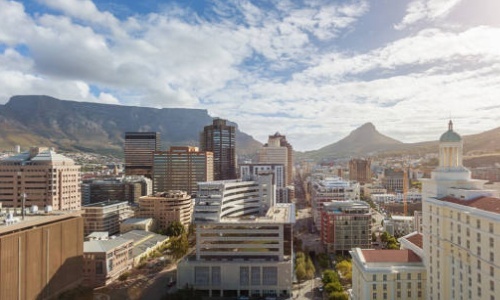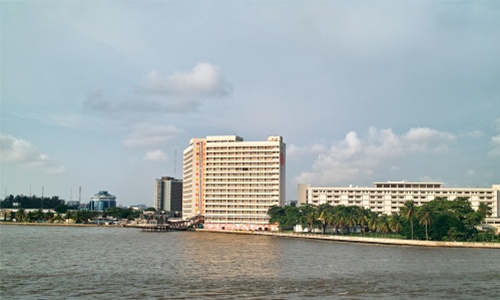
Africa
Africa’s rate of economic growth has increased, averaging 5%. Some countries experienced still higher growth rates, notably Angola, Sudan and Equatorial Guinea, all three of which had recently begun extracting their petroleum reserves or had expanded their oil extraction capacity. The continent is believed to hold 90% of the world’s cobalt, 90% of its platinum, 50% of its gold, 98% of its chromium, 70% of its tantalite, 64% of its manganese and one-third of its uranium. The Democratic Republic of the Congo (DRC) has 70% of the world’s coltan, and most mobile phones in the world are made with elements refined from this mineral. The DRC also has more than 30% of the world’s diamond reserves. Guinea is the world’s largest exporter of bauxite. As the growth in Africa has been driven mainly by services and not manufacturing or agriculture, it has been growth without jobs and without reduction in poverty levels. In fact, the food security crisis which took place on the heels of the global financial crisis has pushed back 100 million people into food insecurity.

Cairo, Egypt
Cairo is in every respect the centre of Egypt, as it has been almost since its founding in 969 AD. The majority of the nation’s commerce is generated there, or passes through the city. The great majority of publishing houses and media outlets and nearly all film studios are there, as are half of the nation’s hospital beds and universities. This has fueled rapid construction in the city – one building in five is less than 15 years old. This astonishing growth until recently surged well ahead of city services. Homes, roads, electricity, telephone and sewer services were all suddenly in short supply. Analysts trying to grasp the magnitude of the change coined terms like “hyper-urbanization”. Cairo has the oldest and largest film and music industries in the Arab world, as well as the world’s second-oldest institution of higher learning, Al-Azhar University. Many international media, businesses, and organizations have regional headquarters in the city; the Arab League has had its headquarters in Cairo for most of its existence.

Cape Town, South Africa
Cape Town is the economic hub of the Western Cape Province, South Africa’s second main economic centre and Africa’s third main economic hub city. It serves as the regional manufacturing centre in the Western Cape. The city’s real GGP is estimated at R188.4 billion and the majority of its enterprises, an estimated 75%, are driven by small businesses. It also has the primary harbour and airport in the province. The large government presence in the city, both as the capital of the Western Cape and the seat of the National Parliament, has led to increased revenue and growth in industries that serve the government. Cape Town has four major commercial nodes, with Cape Town Central Business District containing the majority of job opportunities and office space. Century City, the Bellville/TygerValley strip and Claremont commercial nodes are well established and contain many offices and corporate headquarters as well. Most companies headquartered in the city are insurance companies, retail groups, publishers, design houses, fashion designers, shipping companies, petrochemical companies, architects and advertising agencies. The most notable companies headquartered in the city are food and fashion retailer Woolworths, supermarket chain Pick n Pay Stores, fashion retailer Foschini Group, multi-national mass media giant Naspers, and financial services giant Sanlam. The city is a manufacturing base for several multi-national companies including, Johnson & Johnson, GlaxoSmithKline, Levi Strauss & Co., Adidas, Bokomo Foods, and Nampak. With the highest number of successful Information Technology companies in Africa, Cape Town is an important centre for the industry on the continent. Growing at an annual rate of 8.5% and an estimated worth of R77 billion nationwide the IT industry in Cape Town is becoming increasingly important to the city’s economy.

Casablanca, Morocco
The Grand Casablanca region is considered the locomotive of the development of the Moroccan economy. It attracts 32% of the country’s production units and 56% of industrial labor. The region uses 30% of the national electricity production. With MAD 93 billion, the region contributes to 44% of the Industrial production of the Kingdom. 33% of national industrial exportations, MAD 27 billions come from the Grand Casablanca. 30% of Moroccan banking network is concentrated in Casablanca. One of the most important Casablancan exports is phosphate. Other industries include fishing, fish canning, sawmills, furniture production, building materials, glass, textiles, electronics, leather work, processed food, spirits, soft drinks, and cigarettes. The Casablanca and Mohammedia seaports activity represent 50% of the international commercial flows of Morocco. Almost the entire Casablanca waterfront is under development, mainly the construction of huge entertainment centres between the port and Hassan II Mosque, the Anfa Resort project near the business, entertainment and living centre of Megarama, the shopping and entertainment complex of Morocco Mall, as well as a complete renovation of the coastal walkway. The Sindbad park is planned to be totally renewed with rides, games and entertainment services. Royal Air Maroc has its head office at the Casablanca-Anfa Airport. The biggest CBD of Casablanca and Maghreb is in the North of the town in Sidi Maarouf near the mosque of Hassan II and the biggest project of skycrapers of Maghreb and Africa Casablanca Marina.

Johannesburg, South Africa
Johannesburg is one of the world’s leading financial centres and it is the economic and financial hub of South Africa, producing 16% of South Africa’s gross domestic product, and accounts for 40% of Gauteng’s economic activity. In a survey conducted by MasterCard, Johannesburg ranked 47 out of 50 top cities in the world as a worldwide centre of commerce. Mining was the foundation of the Witwatersrand’s economy, but its importance is gradually declining due to dwindling reserves and service and manufacturing industries have become more significant to the city’s economy. While gold mining no longer takes place within the city limits, most mining companies still have their headquarters in Johannesburg. The city’s manufacturing industries extend across a range of areas and there is still a reliance on heavy industries including steel and cement plants. The service and other industries include banking, IT, real estate, transport, broadcast and print media, private health care, transport and a vibrant leisure and consumer retail market. Johannesburg has Africa’s largest stock exchange, the JSE although it has moved out of the central business district. Due to its commercial role, the city is the seat of the provincial government and the site of a number of government branch offices, as well as consular offices and other institutions.

Lagos, Nigeria
Lagos is Nigeria’s economic focal point, generating a significant portion of the country’s GDP. Most commercial and financial business is carried out in the central business district situated on the island. This is also where most of the country’s commercial banks and financial institutions and major corporations are headquartered. Lagos has one of the highest standards of living as compared to other cities in Nigeria as well as in Africa. The Port of Lagos is Nigeria’s leading port and one of the largest and busiest in Africa. It is administered by the Nigerian Ports Authority and it is split into three main sections: Lagos port, in the main channel next to Lagos Island, Apapa Port and Tin Can Port, both located in Badagry Creek, which flows into Lagos Harbour from the west. The port has seen growing amounts of crude oil exported, with export figures rising. Oil and petroleum products provide 14% of GDP and 90% of foreign exchange earnings in Nigeria as a whole.





